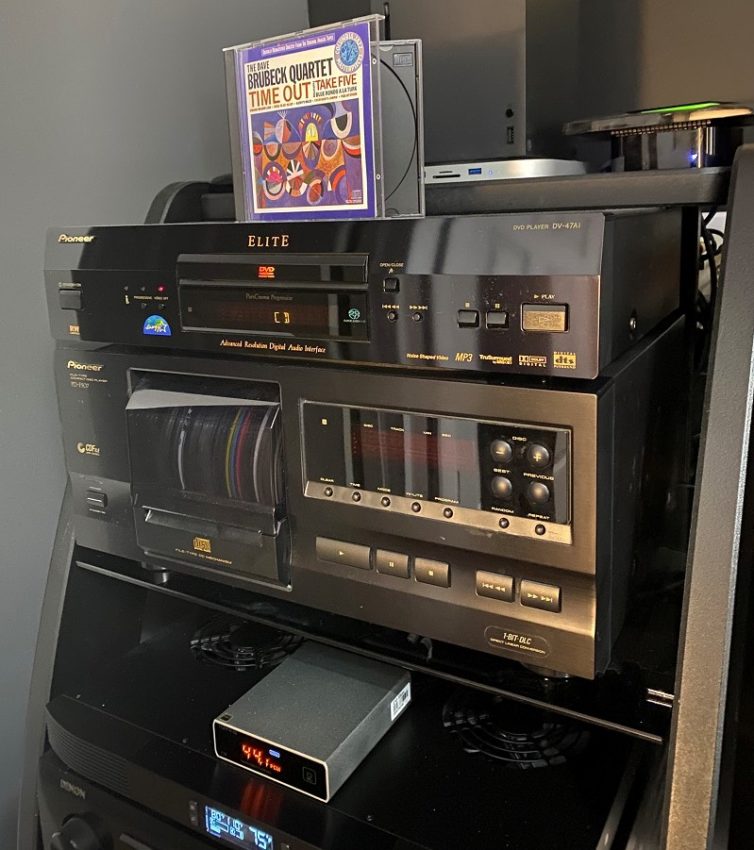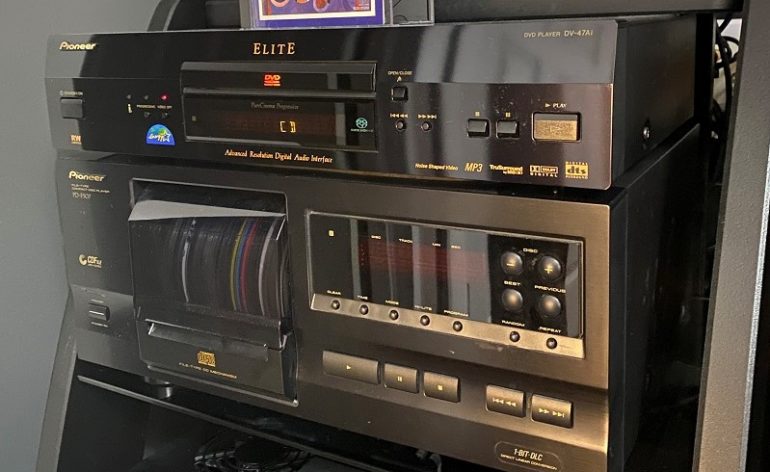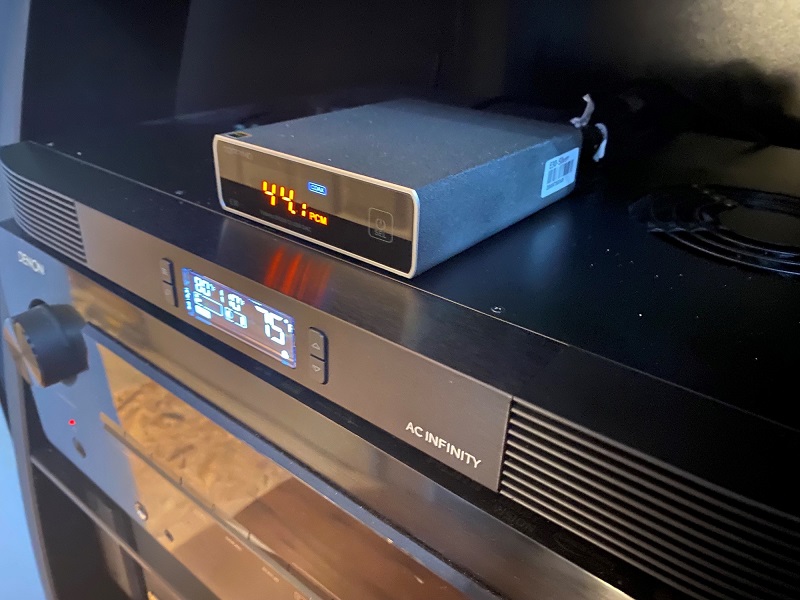Do I Need an External DAC?
We all have our niche in audio. Some are the no-nonsense, one-and-done type of people. They buy their system and never look back. Others are continually on the hunt to find that one piece that will give them that 1% extra they are looking for. And then you have me. I love audio, and I love to try everything. But, I do not have unlimited funds. However, I have a solid used audio market in my tiny city, and I make great use of it. So when I saw a used Topping E30 External DAC on the buy and sell, I did some quick haggling and scooped it up!
What Is An External DAC?
We have an article for those of you who want to do a deep dive into DACs. But for those who want a quick explanation, a DAC is a Digital To Analogue Converter. A DAC takes all the 1s and 0s from your CDs, MP3’s and streaming music services and converts them to an analogue signal that your amplifier can send to your speakers. Chances are, they surround you now. Your CD player, iPhone, Apple TV, and PC sound card are just a few examples of DACs you probably have in your household. So why would you need another one?

Why Do I Need an External DAC?
So there are some very legitimate cases where an external DAC is required. You may have a piece of equipment that does not have a DAC built-in. They are rare, but “CD transport units” are simply disc readers and nothing else. That said, if you own a CD transport, you probably have expensive speaker cables, so….yeah.
Most folks get an external DAC because they feel that their current, onboard DAC is lacking and seek to “upgrade” to a better one. For example, my Pioneer Jukebox player has a 1bit DAC onboard. My Pioneer Elite DVD player has two 24bit DAC’s built-in. And my Topping E30 has a single 32bit DAC built-in. So surely I should use the Topping on my Jukebox, and the Elite has superior built-in DACs? We will get to that in a second.

But Do They Make a Difference?
Audiophiles are a unique breed. They talk in subjective terms like warm, bright, and bloated. Objective terms would be that it has rolled off highs, boosted treble, or boosted bass, as evidenced by its measured frequency response!
Here is where I take umbrage with audiophiles and the use of an external DAC. Most will claim a significant difference in tonality or exceptional clarity of upper mid-bass or treble. There may very well be; it’s called EQ! My Denon X3600 gives me the same EQ with Audyssey, yet they thumb their noses at my AV receiver. Well, excuse me, Mr. Audiophile, does your fancy DAC take eight measurements in your room and then apply 1000s of filters to set your EQ correctly? It doesn’t? But it makes your speakers sound warmer. M’kay!
There is no objective measured proof that the addition of a DAC does anything to improve the sound of your speakers. Yes, if the DAC applies an EQ, you will see a measured difference, but my X3600 receiver can do the same thing with Audyssey and its built-in DAC. But before I get too fired up and grab my pitchfork and torches, I will give this an honest try.
Did A DAC Make A Difference For Me?
So let’s start by explaining the test. I ran this test six times with the same track, Take Five by The Dave Brubeck Quartet. Tracks were run at the same volume, and I used a track I am incredibly familiar with to be sure I would notice any differences. I had my wife with me, and I made her close her eyes as I switched between players so she wouldn’t know which one was playing.
As for my setup, I have a Denon AVR-X3600H and B&K 5000 external amp. My Denon uses a 32bit DAC. My speakers are Paradigm Premier 200B’s, and I have my room acoustically treated. I made all connections with Monoprice RCA cables. My CD players are a Pioneer PD-F507 and a Pioneer Elite DV-47Ai. The 507 features a 1bit DAC, and the Elite has dual 24bit DAC’s. My external DAC is a Topping E30 which features a 32bit DAC and has five presets or EQs. I chose the flattest curve offered in the manual for consistency. I would also like to point out that both my Denon X3600 and Topping use an AKM DAC. They are slightly different models, but I suspect they are more similar than not.

The DAC 
The Stack 
They’re Gloss Black? (I tried to make it all rhyme!)
The Tests
Tests one and two had the CD players connected to the Denon X3600 with their RCA analog connections. The CD players used their onboard DACs to bypass the one in the Denon. I also played the track with Audyssey enabled and disabled for all tests. My wife could not hear any difference between the two players, but she did notice a difference between Audyssey on and off.
For tests, three and four, the players were connected to the Denon with their coax outputs. The coax bypassed the onboard DAC’s and used the DAC in the Denon. Same as above, I played the track with Audyssey on and off. Unsurprisingly, my wife couldn’t hear a difference between the DAC inside the Denon and the players but did pick up on Audyssey.
Lastly, tests five and six were with the 2 CD players hooked up to the Topping E30 DAC with their coax outputs and fed into the Denon’s analogue inputs. The Topping bypassed the onboard player and Denon DAC’s completely. Not to sound like a broken record, my wife couldn’t tell the difference but noticed when I turned Audyssey on and off.
Editor’s Note: By engaging Audyssey, Andrew was re-engaging the DACs in his receiver. In order for Audyssey to work, it has to convert the analogue signal into digital, apply the processing, and re-convert the signal back to analogue. There is a lot more to it than that, but the point is well made. Applying EQ can and should make an audible difference. Switching DACs doesn’t.
My Thoughts
So let’s call out the elephant in the room. I didn’t have any measurement gear for these tests. That means I had no way of ascertaining if there was an objective, measurable change. My wife’s observations were purely subjective and could have been based on several factors, including that she knew I was doing a test and was expecting changes. Hardly a scientific test, but in my defense, almost all HiFi reviews I have watched or read are entirely subjective. Oh, and I knew what sources were playing for those wondering, and I didn’t hear any significant difference. If I did hear something, I chalked it up to confirmation bias – I did a thing, so I heard a thing.
Am I Keeping It?
This is the million-dollar question, isn’t it? Even though neither my wife nor I could hear a noticeable difference, I am keeping it. But not because of any changes it made to my sound. I am keeping it for a couple of straightforward reasons.
First, I now have one set instead of having two sets (four cables) of RCA’s into my DENON. Yes, I know I could have used COAX outputs and had two cables. But, the Topping is smart and knows which COAX is active, and switches automatically to that input. I can also use only one input on my Denon, and I like that it streamlines my setup and mess! And yes, I know that I have the other two cables going from the DAC to my players, so I have the same number of cables. But they are much better managed and look neater.
Second, I love the way it looks. I grew up in the 80s and went to University in the ’90s. Big stacks of stereo gear with lots of LED readouts is what we did! So that funky orange readout telling me that my CDs are playing at 44.1kHz is in my wheelhouse!! And let me be clear. If I can find a 17″ wide DAC, in black, with dual coax inputs, and it’s cheap – I am buying and adding it to my stack!
My Take
So I think it’s pretty clear that I didn’t find any subjective difference in my setup, nor did my wife. I don’t buy into the hype that an external DAC can or should change anything in your source chain. The only job that the DAC has is to convert the 1s and 0s precisely as recorded. Any change to that is unwanted. If there was a change in my system, it was not because of the different DAC It was the five different presets inside the DAC’s EQ affecting the response curve.
Would I recommend you get one? No, I don’t see the need for you or anyone to get one. But I don’t want to be a hypocrite. If I weren’t writing for a website and looking for content to write about, I probably still would have gotten it because I want to make my own conclusions about the need for a DAC. If you’re going to do the same, and your store has an excellent return policy, go for it. Or if you are like me and you find a deal and want it, go for it. As long as you go into this with your eyes wide open.





You were lucky with your wife around ! I will bring mine around to help me understand you !
I am lucky mine she shares my passions! Good luck to you!